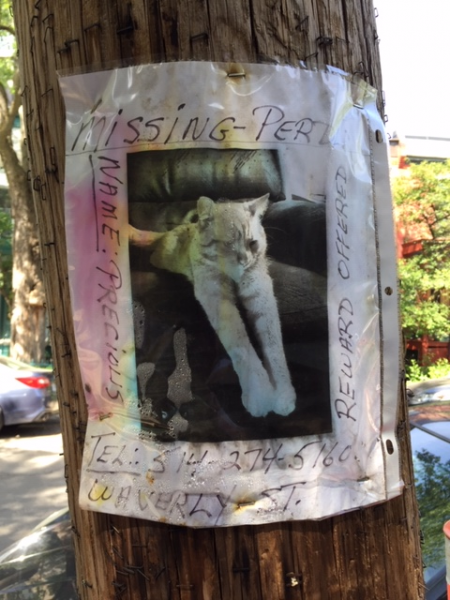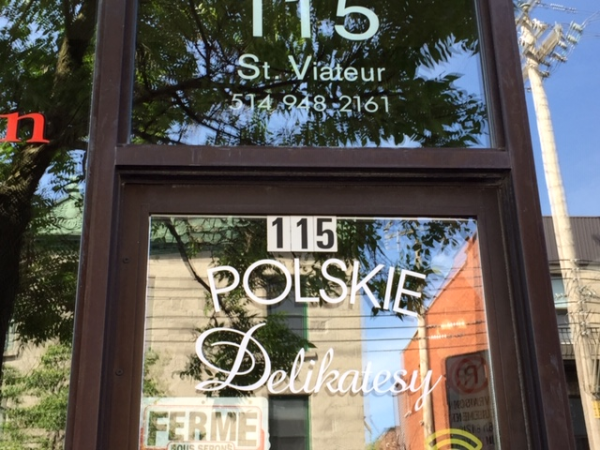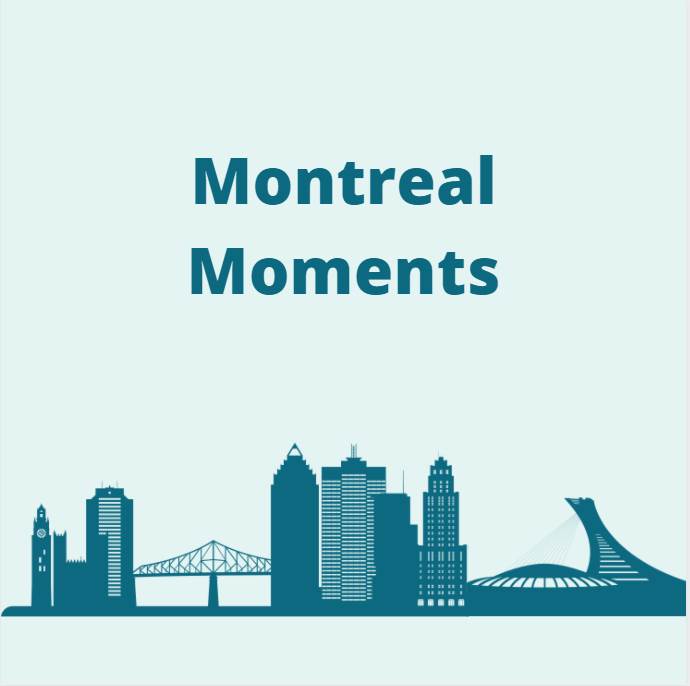By Charlotte Doane
This excerpt was originally submitted as an assignment for the 2019 Translation Summer School: Translating Each Other/Translating The Other at Concordia University. Students were instructed to explore famously bilingual Montreal and keep a journal of their linguistic observations.
June 24, 2019

Telephone pole, Mile End
The “missing cat” posters of Montreal could easily provide a corpus for a geographical-linguistic study all its own. This one was spotted in the Mile End, a neighbourhood with a long history of settlement by immigrant communities located geographically and symbolically between the English and French Montreals—east and west.
Today, posters like this can serve as indicators of the ever-changing linguistic landscape of the area. At first glance, this example seems more or less bilingual, with the heading MISSING – PERDU. But closer inspection reveals that perdu is the only French that appears on the poster. A French speaker could likely figure out all other information on the poster, or at least understand the most important parts. Does that mean this translation of only one word is a “good” translation? If a good translation conveys meaning, then it must be.
In fact, the creator of this poster could most likely have left “missing” untranslated too, and French-speakers would still be able to help locate their cat. But this translation conveys not only the meaning of a word, but also a gesture of goodwill and recognition of “the other.” They may speak mostly English, but they don’t want to assume that any passersby do too. After all, the anglophones and francophones of Montreal certainly share a love of cats!
June 24, 2019
Polish deli, Mile End
Euro-Déli Batory is located next to the formerly Italian, formerly Irish, currently Polish Catholic Church of St. Michael and St. Anthony. It caters to a Polish clientele with authentic comfort food dishes. The text in this photo is easily understood, but it is also recognizably Polish thanks to the word polskie. It is surrounded above and to the left and right with signage in French, including the words déli (with the accent) and polonais, though not together as one phrase. Polskie Delikatesy, therefore, is not a translation of déli polonais.

This is not so much translation as polyglossia, the coexistence of different languages within a linguistic community. This often happens when the languages or language varieties serve different purposes. Here, French is used for one purpose and Polish for another. French appears to be used for most purposes, taking up much more physical space than Polish—on the door, there is a fermé/ouvert sign, and the glass reflects a French-language parking sign. Both the sign and the business are a little bit of “Polishness” surrounded by francité.
Passersby might only notice the eye-catching French signage on the larger windows to each side. But the deli’s customers are presented with the Polish text as they walk through the door. If those customers are Polish-speakers living in francophone Quebec, then perhaps the purpose of the Polish language is to signal a place where one’s minority language and culture will cease to be the other—in short, where one can feel at home.
This article is part two of our Montreal Moments series. Read part one here.



